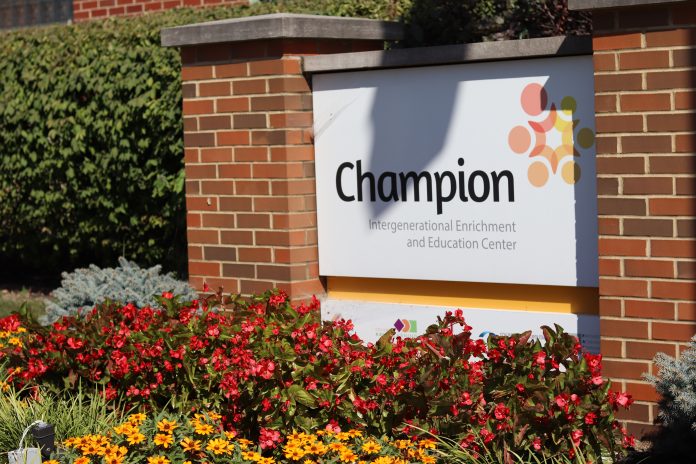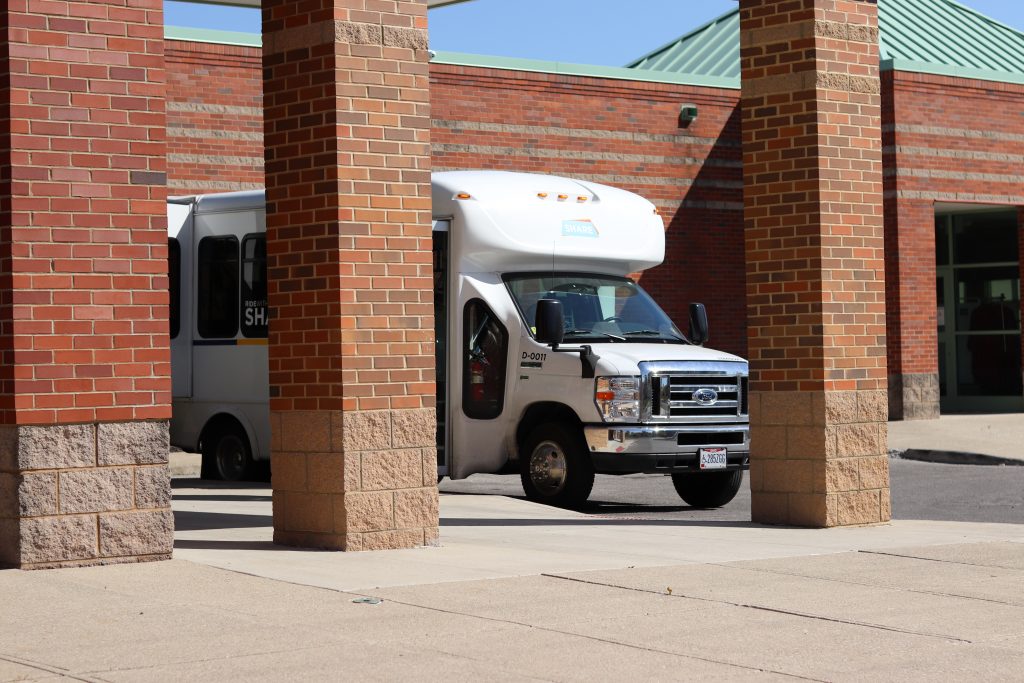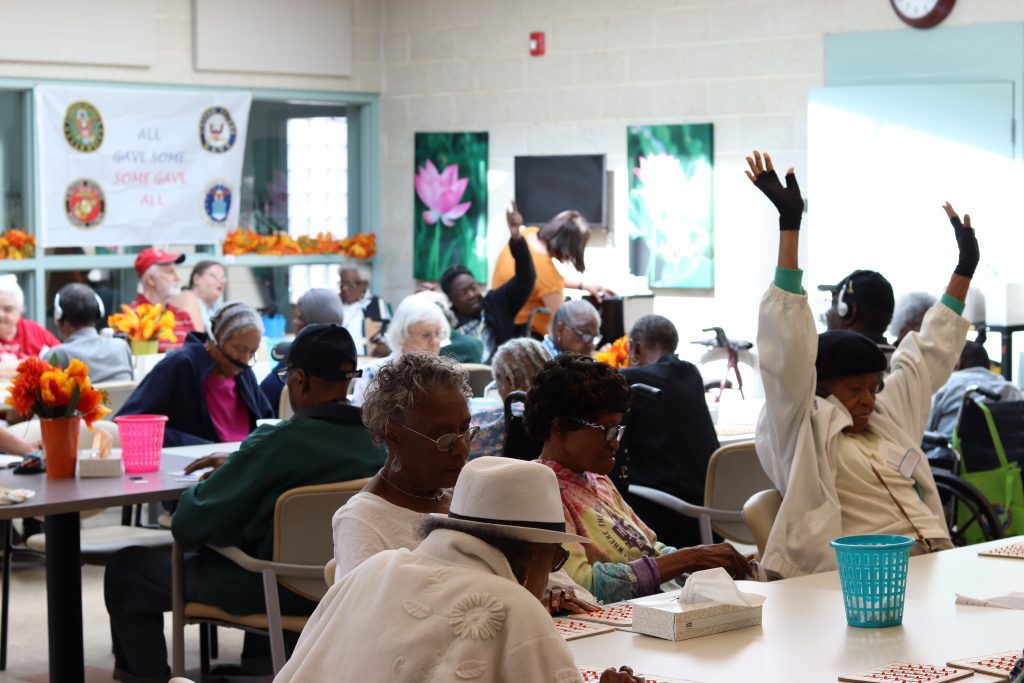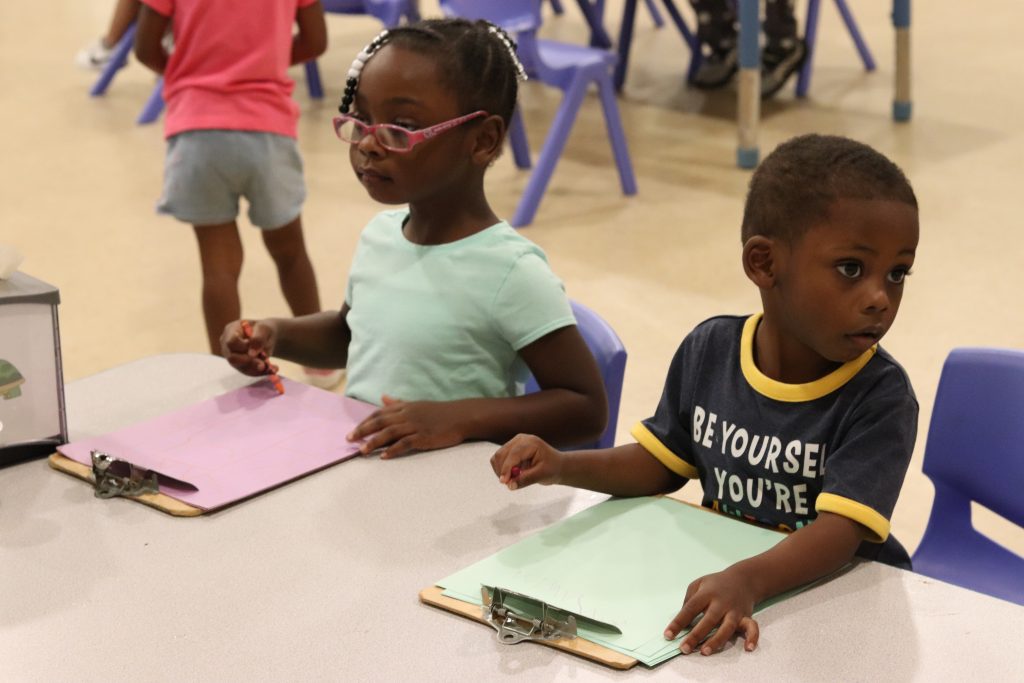Feature Article
by Lauren Hoffman
Every Monday through Friday, around 7:00am, buses begin to pull up to a building in the King Lincoln District of Columbus, Ohio. One bus pulls up to one side of the building. The doors open and preschoolers, aged 3-5, file out. The second bus pulls around to the other side of the building. The doors open and older adults exit, some with mobility aids and others with staff assistance, all above or around 65 years of age.
It takes a unique facility to accommodate and care for two very different age groups. Yet, this is exactly what Champion Intergenerational Center does. Champion is a combined early learning center and senior day-care center in Columbus, Ohio that has been operating since 2014. Approximately 50 kids and 50 adults are served each day. Champion accommodates two preschool classes, each with a cap of 14 students. In addition to preschool, the early learning center has day-care services for children 6 weeks to 3 years old. Three organizational entities make up Champion: Columbus Early Learning Centers, National Church Residences, and The Ohio State University.
Champion holds a unique position as an intergenerational center. National Church Residences runs the adult day portion of the center. They have other centers located throughout the Columbus area, but Champion is their only intergenerational center. Similarly, Columbus Early Learning Centers, who runs Champion’s preschool (and other preschools in the area), has their headquarters located at Champion. Therefore, Champion plays a role in pioneering intergenerational centers in central Ohio; it sets a precedent for innovative care models and collaboration in medical and educational spaces.
OSU’s primary role at Champion is to organize intergenerational programming. In tandem, OSU works to facilitate student engagement at Champion in nursing, medical, and social work training. New faces regularly pop in and out as students complete trainings and field experience, largely working with the older adults at the center. This engagement between university students and older adults is regarded as a form of intergenerational activity, a major objective of the center.
In fact, Champion’s mission is as follows:
“Champion Intergenerational Center is a community-university collaboration where older adults, young children, youth, and university students work together with staff and faculty to advance knowledge, health, and wellness across the life span and where all generations are engaged, feel values, and find purpose.”
Intergenerational interaction occurs when two generations have meaningful contact. Often, intergenerational activities (IG activities) bring together young children and older adults. Experiences can range from talking and sharing stories to creating art or enjoying music together. It isn’t unusual for children to see seniors as “scary” or unapproachable; IG interaction breaks down these stereotypes and can create a culture of compassion within a community. Intergenerational activities also have direct health benefits to both parties. When kids interact with older adults their social skills and compassion improve, and seniors can experience reduced feelings of loneliness and increased feelings of purpose (McGuire).
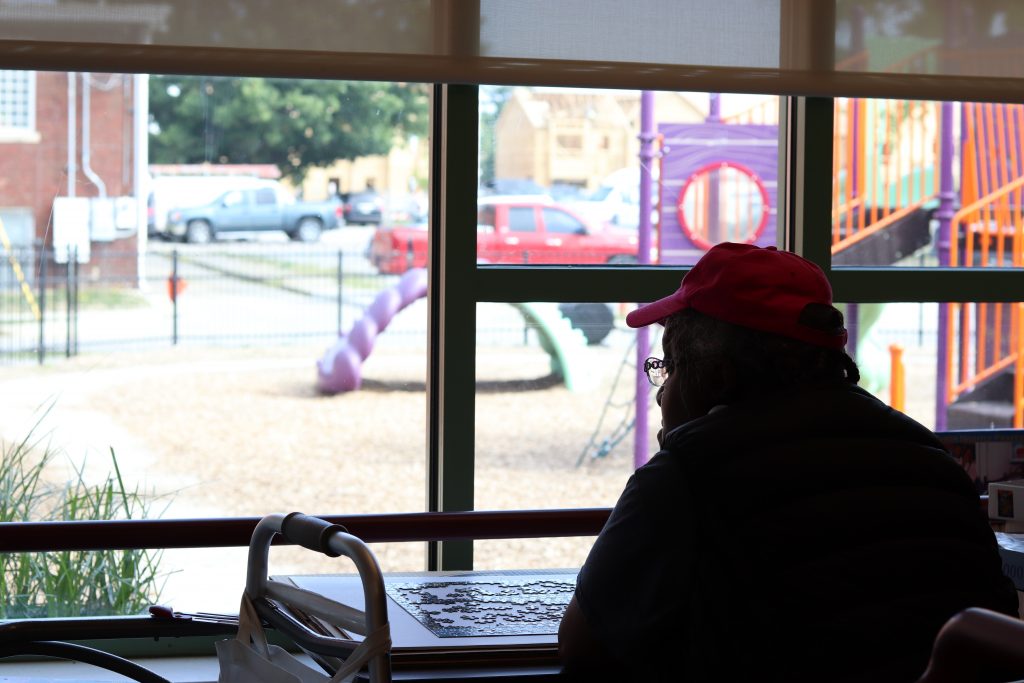
One client works a puzzle and waits for the preschoolers come outside and play on the playground.
The building’s layout separates the two generations by wings; one wing is dedicated for the adult day, the other for the early learning center. The cafeteria is where the two connect. In addition to their individual curricula, the older adults and preschoolers come together twice a week for 60 minutes to participate in intergenerational activities. Here, they interact with each other while working on art projects, a class taught by Miss Pam, or during a sign language music class, taught by Miss Mary. At 10:30AM on Wednesdays and Thursdays, approximately 8 preschoolers file into the designated IG classroom on the senior day wing and are ushered into seats that are interspersed with about 10 of the older adults.
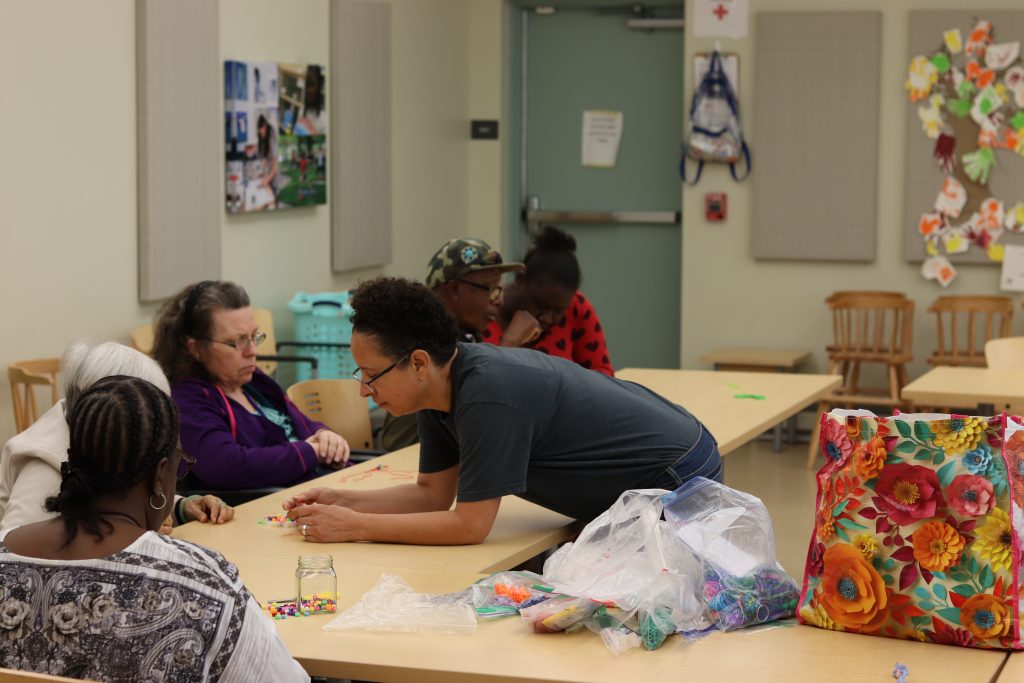
These types of programmed IG activities have run since 2015, but they have looked different throughout the years at Champion. Past initiatives for intergenerational activities at Champion have included: student facilitators, staff facilitators, contracted facilitators, and an intergenerational activity cart. Student researchers have also left binders of programming plans that are never implemented.
While intergenerational programming does occur at Champion, the center does little to encourage intergenerational engagements aside from these programmed activities. After analyzing the daily routines of the older adults and the preschoolers, only 9% of either generation’s weekly time at Champion is even spent in the same room. To make matters worse, not all the older adults attend the IG activities, and some adults don’t attend Champion on the days that they run. Champion’s latest IG model, contracting individuals to teach IG classes, may also be soon to change.
A new state grant now leaves the preschool with a less flexible program, leaving them with a locked schedule until the afternoon. Seniors begin to be picked up in the early afternoon; this is why IG activities at Champion have traditionally occurred in the morning. As it stands, it is unclear whether Champion will be able to continue to offer intergenerational programming in its current form. These classes are one of the sole sources of interaction between the older adults and the preschoolers. Without them, Champion would be strapped to truly call itself an intergenerational center.
In addition to limiting procedures employed by the state, a high rate of turnover with the preschool teachers has restricted attendance of the IG activities. As of today (late September 2019), the most senior teacher has worked at Champion for 5 months. It, therefore, came as no surprise when the teachers expressed feelings of being overwhelmed; they asked to hold off on the IG programming while becoming acclimated to the new school year.
Champion is full of possibility when it comes to intergenerational activities but falls short in day-to-day execution. After interviewing the preschoolers and older adults, it is clear that they want to interact. While some seniors noted that they had grandchildren at home and weren’t interested in activities with the kids, others said they love to see the kids and appreciate the energy they bring to Champion. The preschoolers echoed these sentiments. “They’re my friends,” and “I say hello to them,” are common comments the preschoolers make when asked about the older adults at Champion.
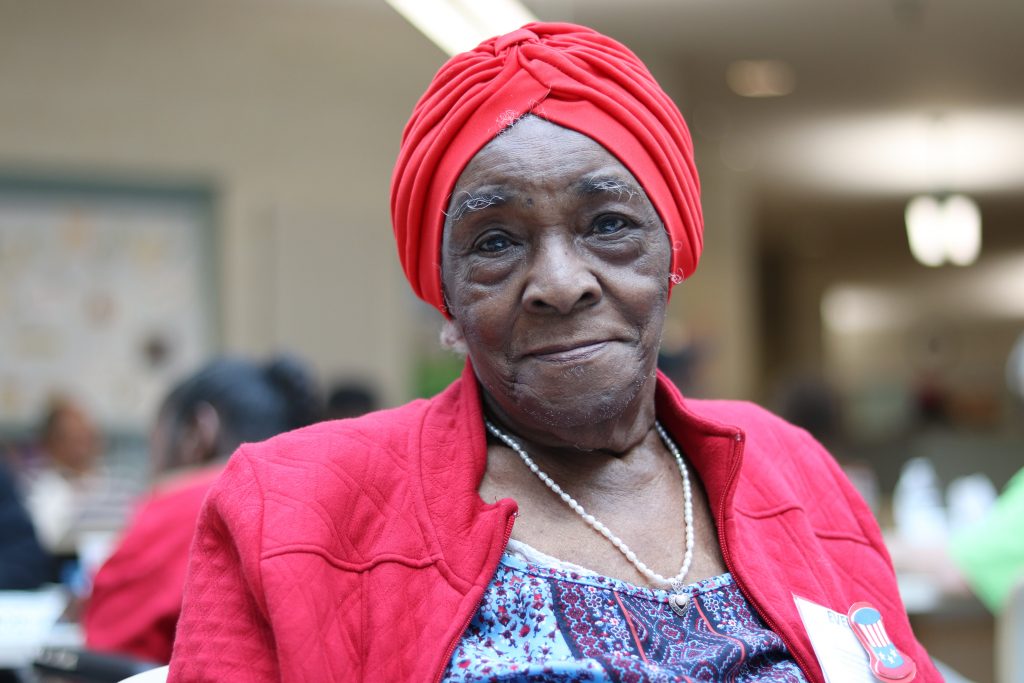
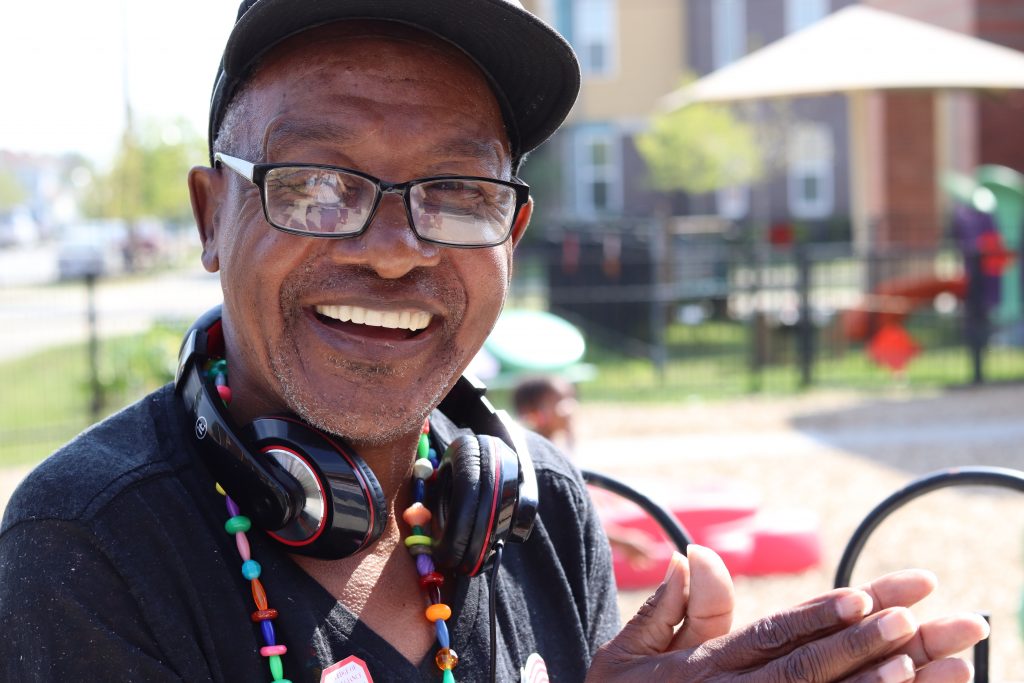
A few of the faces one sees each day at Champion. 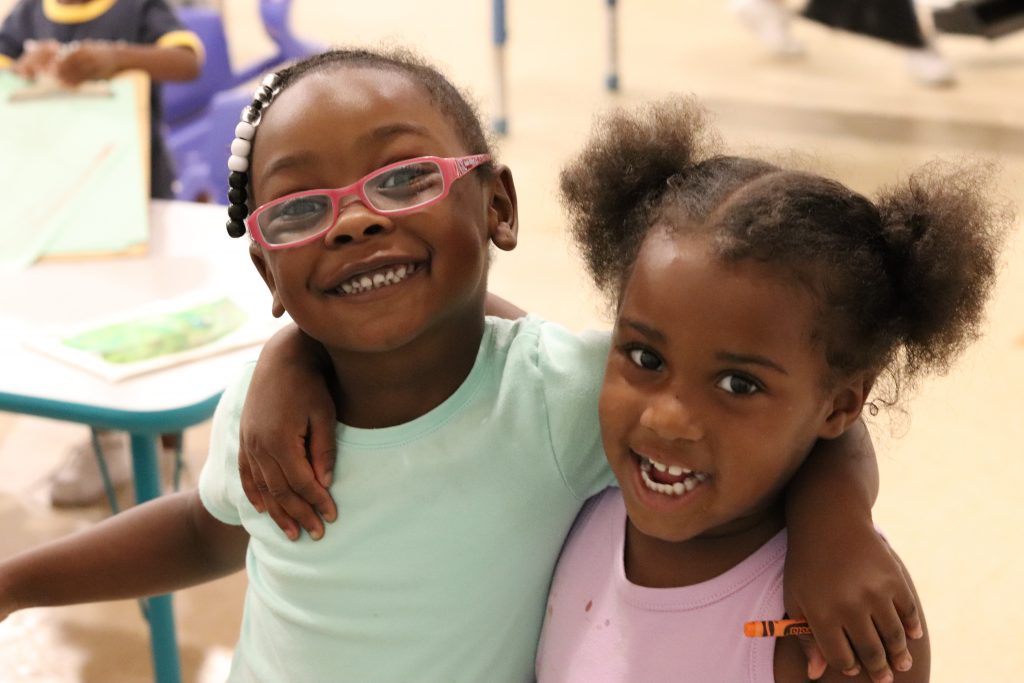
There are missed opportunities for spontaneous intergenerational engagements, particularly, in the cafeteria. During lunchtime, the older adults and the preschoolers eat in the same room, but their tables are separated and the two groups rarely interact. Staff and teachers see the potential in an intergenerational mealtime. Miss Quinn, one of the preschool teachers, noted, “I think mealtime is great for authentic and organic interactions,” but any lunchtime intergenerational interaction has yet to be implemented sucessfully.
Combined lunches have been tested in the past. Staff would bring a few preschoolers and older adults to a side room where they would eat together. This approach felt less chaotic to staff, but the children felt uncomfortable being separated from their peers; they became hesitant to interact with the older adults. Unsurprisingly, this initiative halted.
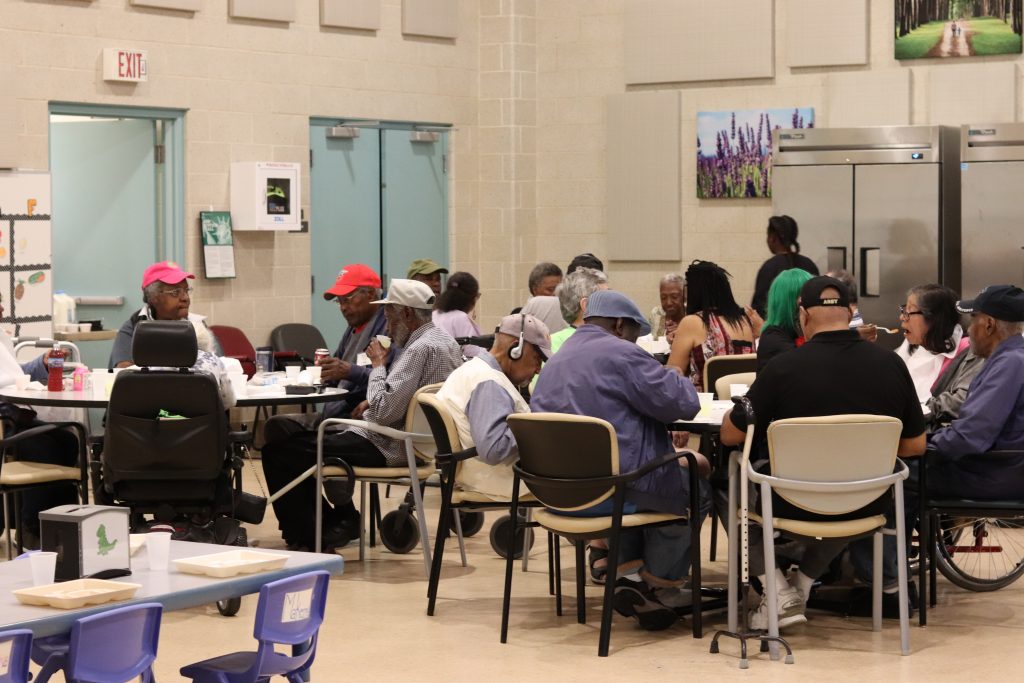
The older adults eat lunch separately from the preschoolers. 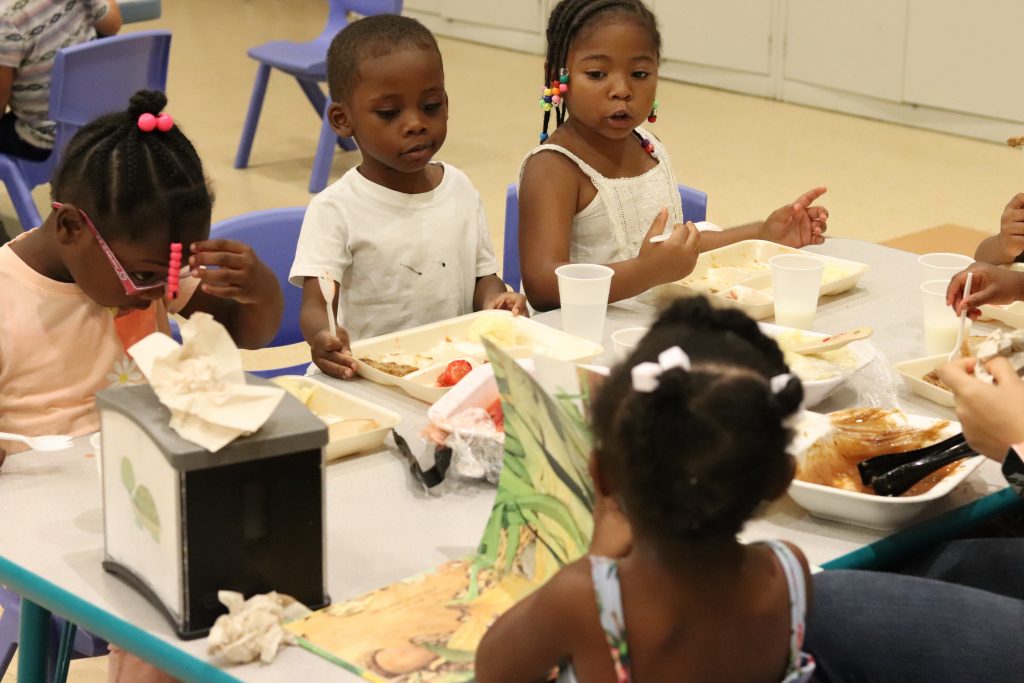
The preschoolers sit at smaller tables in their class groups.
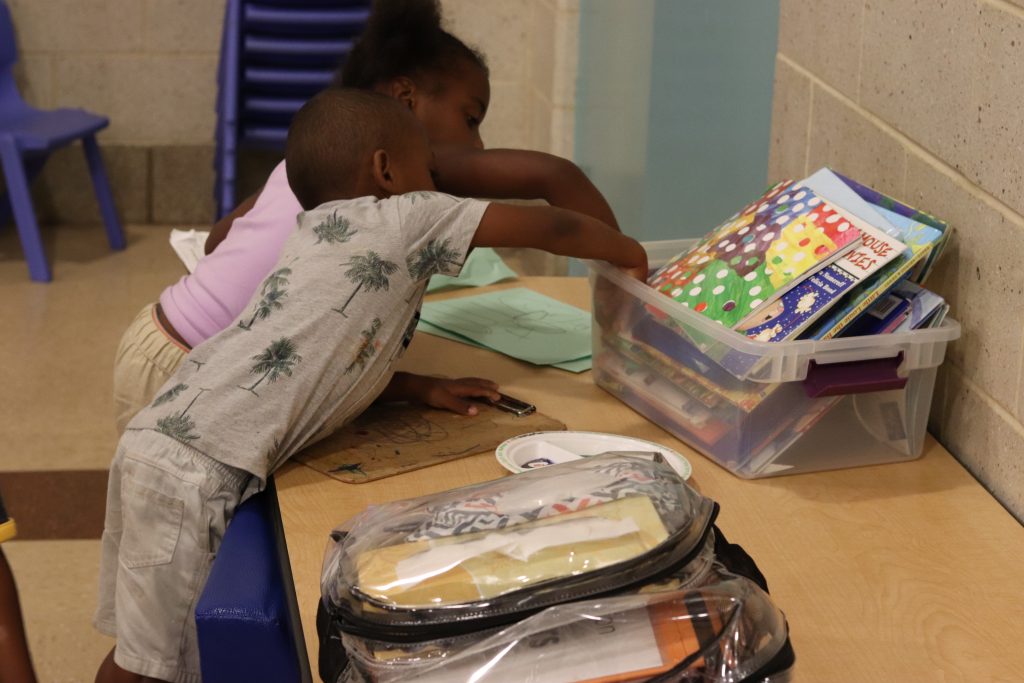
After finishing lunch, preschoolers begin to read, color, run around, and chat among themselves.
While staff self-identify as having a positive experience at Champion, it is apparent that lunch is a time when the preschool teachers and adult day staff are under pressure. After lunch, the preschoolers are allowed to run around, read, and color while teachers clean up the tables. The older adults, staff, and cafeteria workers have all noted their dissatisfaction with this process during interviews. Studies have shown that chaotic classrooms lead to negative classroom outcomes and higher turnover rates in teachers (Grant).
The teachers and staff at Champion are overworked, underpaid, and don’t have the time to design new ways of engagement between the seniors and kids; they have enough to worry about. Hallie, the lunch manager at Champion, notes that lunchtime interaction would be nice but she, “doesn’t want any responsibility to keep everyone in check.” The staff have enough on their plate caring for young children and adults with complex needs.
Change is needed to truly meet the standards set by Champion’s mission statement and administration’s expectations of intergenerational interaction. While Champion calls itself an intergenerational center, policy and schedule changes restrict the currently programmed IG activities. The existing lunchtime routine, a natural time for intergenerational interaction, isn’t designed to encourage these engagements. A third-party intervention, like myself, can bridge the gap to rethink meaningful mealtime interaction between the preschoolers and older adults at Champion Intergenerational Center.
By 6:00pm, at the end of each day, buses have departed from both sides of the building toting preschoolers and older adults back home. It is my hope (and Champion’s hope) that the two generations can return the following day and, this time, excited to see each other once again.
Works Cited
Grant A. & Jeon L. & Buettner C. (May 2019) Chaos and commitment in the early childhood education classroom: Direct and indirect associations through teaching efficacy. Teaching and Teacher Education, 81, 50-60.https://www.sciencedirect.com/science/article/pii/S0742051X16305145?via%3Dihub
McGuire A. (2019). Toddlers and seniors together: The benefits of intergenerational care. Institute for Family Studies. https://ifstudies.org/blog/toddlers-and-seniors-together-the-benefits-of-intergenerational-care

